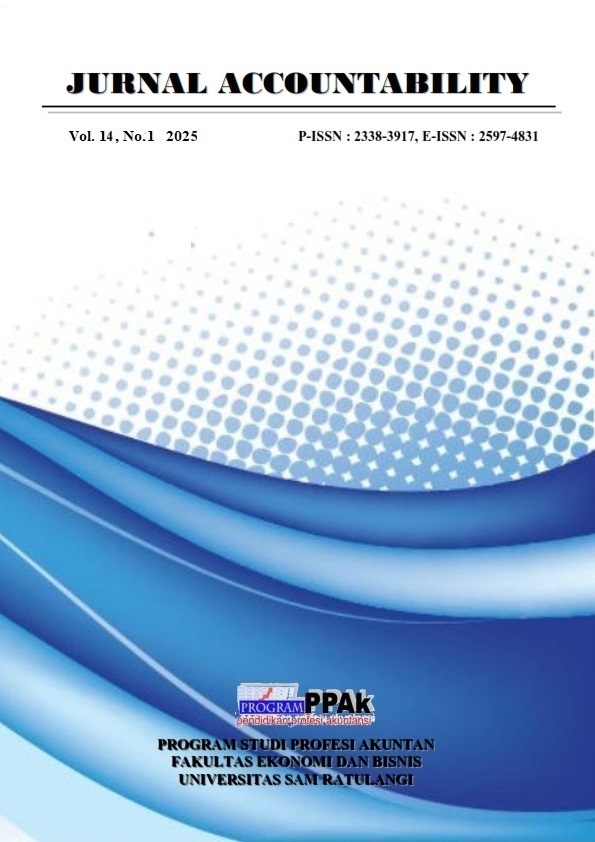An ANALYSIS OF VALUE ADDED TAX IMPOSITION ON VIRTUAL GOODS
DOI:
https://doi.org/10.35794/ja.v14i01.60999Abstract
This research aims to find out how Value Added Tax (VAT) is imposed on digital goods transaction.This research uses a qualitative descriptive method by utilizing primary data and secondary data. The research results show: a) VAT collection on digital goods transactions is carried out when the transaction takes place with a tariff of 11%, and the company issues an order receipt after the transaction is successful. The Ministry of Finance specifically appointed 171 domestic and foreign companies as VAT collectors on digital goods with criteria that must be met. b) VAT payments on digital goods transactions are made every month by attaching the required files. From the results obtained, 157 companies have deposited VAT on time and experienced no delays; However, 14 collection companies were found that had not deposited VAT. c) VAT reporting on digital goods transactions is carried out quarterly by collectors by attaching files in accordance with applicable regulations.
Keywords: Imposition of Tariffs, Virtual Goods, Value Added Tax
Downloads
Published
Issue
Section
License
Copyright (c) 2025 Milan Sumilat, Dr. Jessy D.L Warongan, SE., M.Si., Ak., CA., CWM®, Dr. Claudia W.M. Korompis, SE,MSA,Ak

This work is licensed under a Creative Commons Attribution-NonCommercial 4.0 International License.
The articles published in Jurnal Accountability are licensed under Creative Commons Attribution-NonCommercial 4.0 International with authors as copyright holders.
Â

This work is licensed under a Creative Commons Attribution-NonCommercial 4.0 International License.
Â
- Share — copy and redistribute the material in any medium or format.
- Adapt — remix, transform, and build upon the material.
- The licensor cannot revoke these freedoms as long as you follow the license terms.
- Attribution — You must give appropriate credit, provide a link to the license, and indicate if changes were made. You may do so in any reasonable manner, but not in any way that suggests the licensor endorses you or your use.
- NonCommercial — You may not use the material for commercial purposes.
- No additional restrictions — You may not apply legal terms or technological measures that legally restrict others from doing anything the license permits.
- You do not have to comply with the license for elements of the material in the public domain or where your use is permitted by an applicable exception or limitation.
- No warranties are given. The license may not give you all of the permissions necessary for your intended use. For example, other rights such as publicity, privacy, or moral rights may limit how you use the material.


